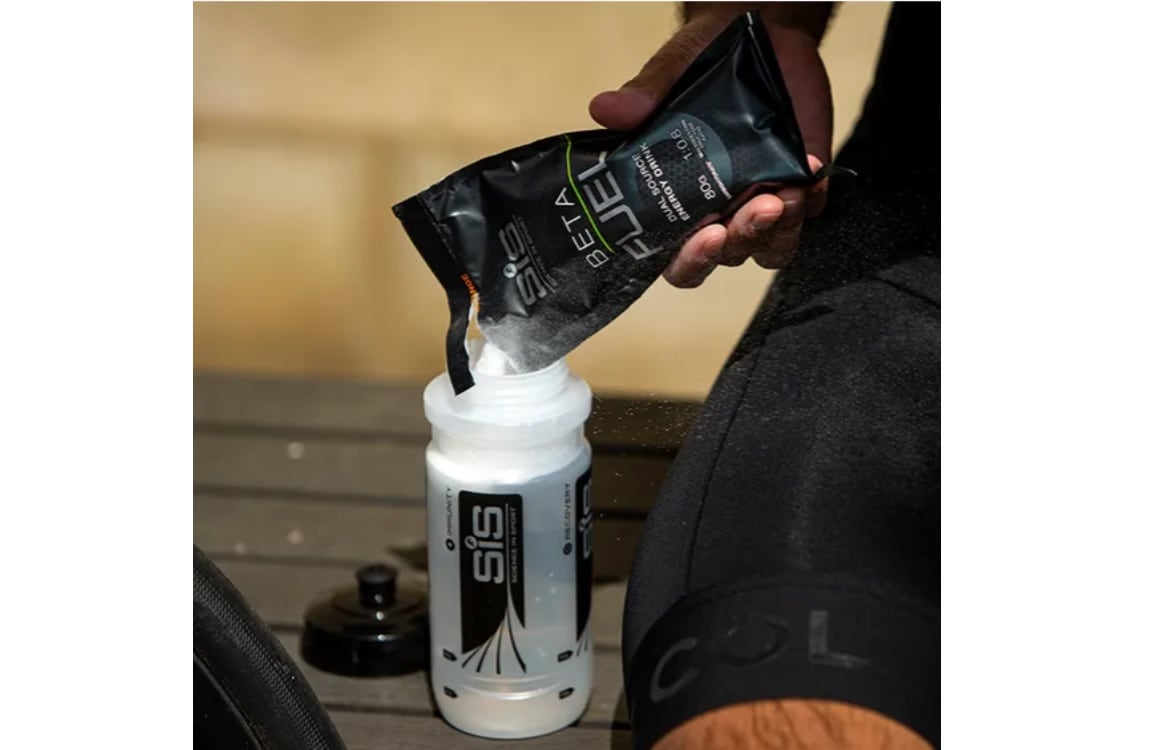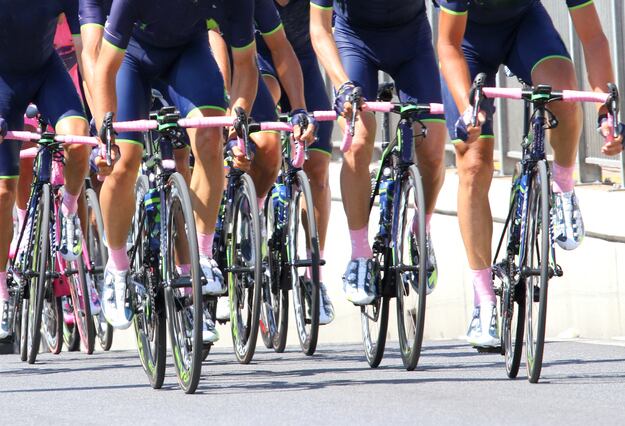Findings by Science in Sport identify this amount as significantly higher than the current recommended intake of 90g per hour and could lead to improved capacity for endurance athletes.
“We are hugely excited by the results provided by Science in Sport Beta Fuel,” states Professor James Morton, Director of Performance Solutions at Science in Sport.
“Considering that we observed no differences in carbohydrate oxidation between liquid, gel, chew or a combined approach, the SiS Beta Fuel range can be tailored to an athlete’s individual fuelling preferences.
“There is no doubt that this highly flexible and functional fuelling strategy will lead to improved performances for all endurance athletes.”
Study details
The study, published in the Journal of Applied Physiology, investigates carbohydrate (CHO) delivery forms and its effect on oxidation, gastrointestinal discomfort, and exercise capacity.
Nine trained males ingested 120g of CHO from fluid (DRINK), semi-solid gel (GEL), solid jelly chew (CHEW), or via a co-ingestion approach (MIX).
Participants then cycled for 180 min at 95% lactate threshold followed by an exercise capacity test (150% lactate threshold).
Peak rates of CHO oxidation (DRINK, 1.56; GEL, 1.58; CHEW, 1.59; MIX, 1.66g·min-1) and oxidation efficiency (DRINK, 72; GEL, 72; CHEW, 75; MIX, 75%) remained the same between trials.
Despite ingesting 120g of carbohydrate, participants reported minimal symptoms of gastrointestinal distress across all trials.
Exercise capacity was not significantly different between conditions (DRINK, 446; GEL, 529; CHEW, 596; MIX, 469 sec).
“This data represents the first time that rates of CHO oxidation have been simultaneously assessed using feeding strategies (i.e., pre-exercise CHO feeding and the different forms and combinations of CHO during exercise) commonly adopted by elite endurance athletes,” the study states.
“We conclude 120g CHO (in a 1:0.8 ratio of 67 maltodextrin or glucose:fructose) is a practically tolerable strategy to promote high CHO availability and oxidation during exercise.”
The team, which includes researchers from Bath University and Liverpool John Moores University, go on to comment that the data supports suggestions that athletes should ingest, “multiple-transportable CHOs, co-ingested in ratios closer to unity, and at absolute intakes exceeding 90 g·h-1 in order to optimise CHO availability and oxidation.”
“Notwithstanding potential effects of hyperinsulinemia and assuming an estimated oxidation efficiency of approximately 70-75%, the ingestion of 140-150g·h-1 may be considered as the maximal worthwhile dose to achieve such high rates of oxidation,” the team concludes.
GI symptoms
Commenting on the observation that minimal gastrointestinal symptoms were observed during the MIX trial that combined all three CHO forms, the team thought it to be significant for professional athletes.
“These findings have important implications given that this pattern of ingestion reflects the real-world fuelling practices of elite endurance athletes, who typically ingest a mix of CHO forms across exercise durations of 3-6 hours,” the paper states.
“Although the exercise intensity in the present study was deliberately chosen to reflect the sub-maximal intensity of “riding in the bunch” during professional road races (i.e. below lactate threshold), it would also be beneficial to include frequent high-intensity efforts in future studies
“This is to assess the effects of high CHO ingestion on potential GI symptoms when exercising at intensities above lactate threshold.”
Stephen Moon, CEO of Science in Sport, commented that the study changed everything the industry thought and knew about high carbohydrate and endurance nutrition and how to fuel winning performances.
“Born out of elite need, Science in Sport has delivered a superior product with world-leading science,” he says.
“We can now educate endurance athletes on how much carbohydrate intake they should really be aiming for, which completely changes the game for performance potential in endurance racing and redefines limits in an unprecedented way. This is the future of endurance fuelling.”
Source: Journal of Applied Physiology
Published online: doi/epdf/10.1152/japplphysiol.00091.2022
“13C-glucose-fructose labelling reveals comparable exogenous CHO oxidation during exercise when consuming 120 g/h in fluid, gel, jelly chew or co-ingestion.”
Authors: Mark Hearris et al.



